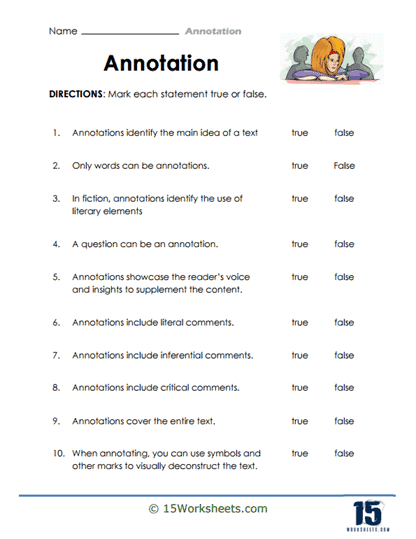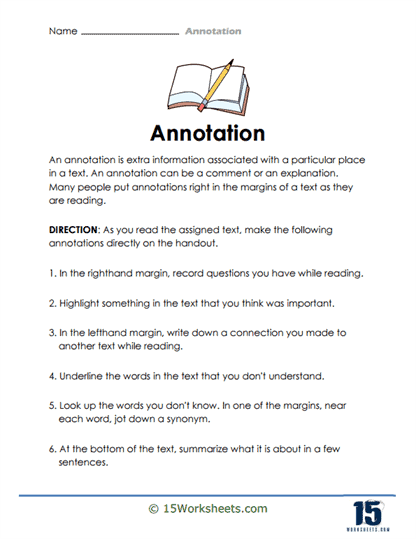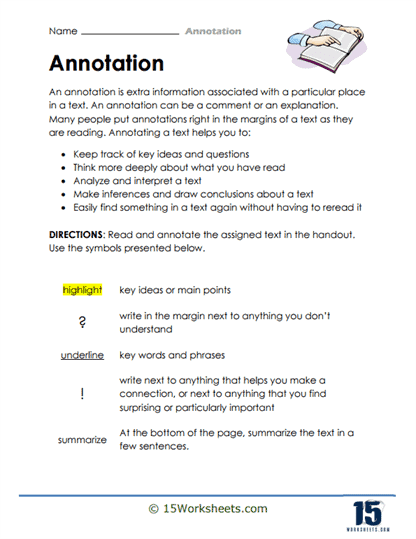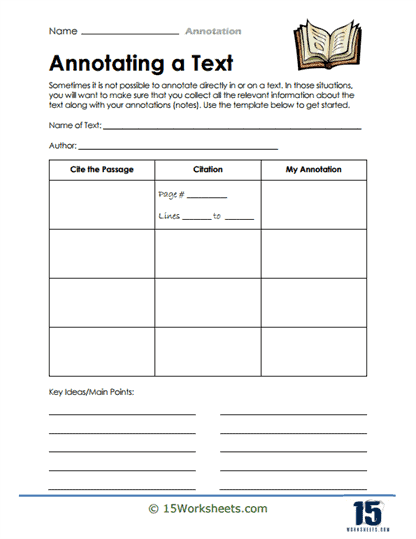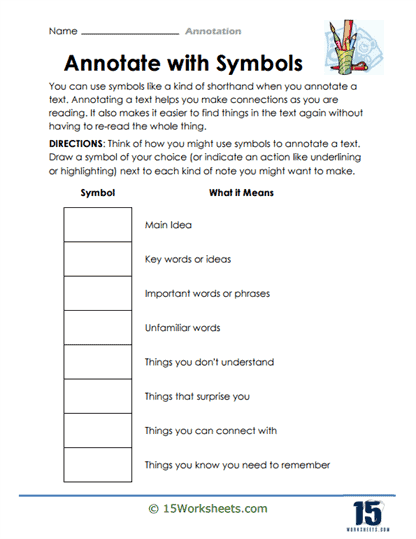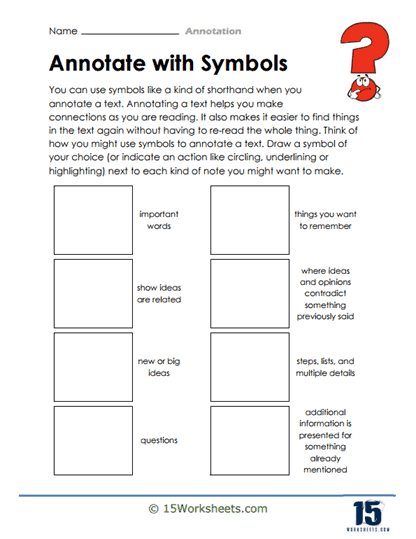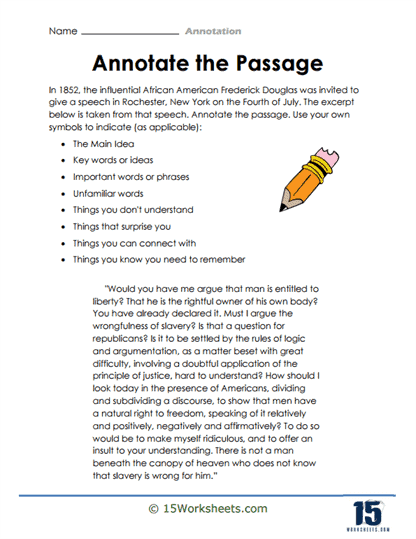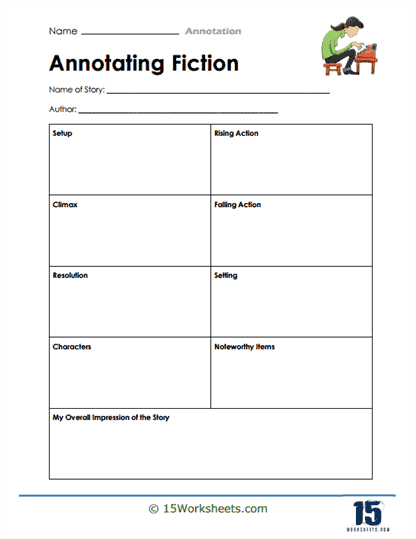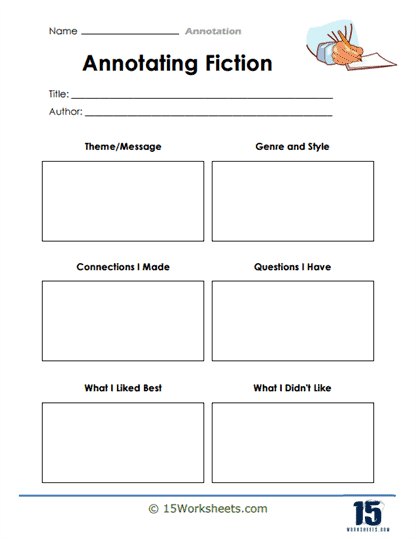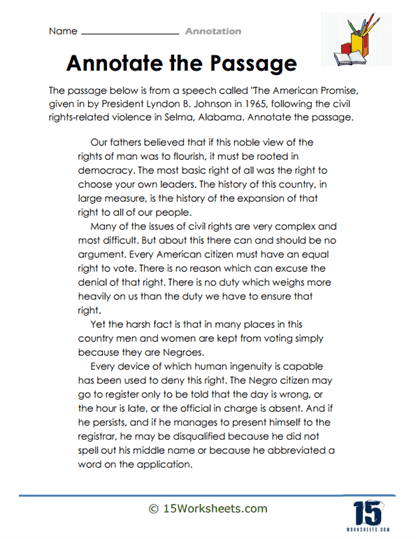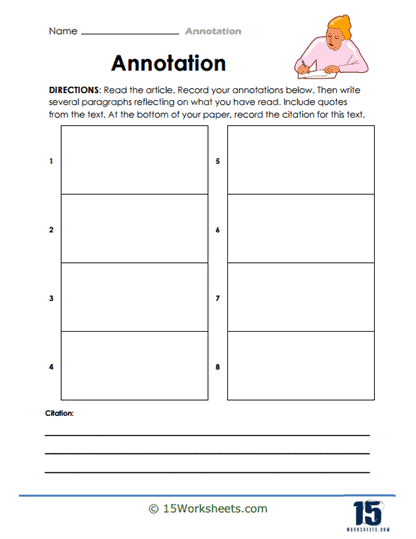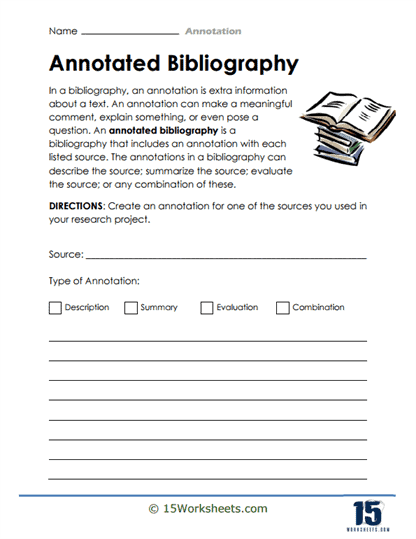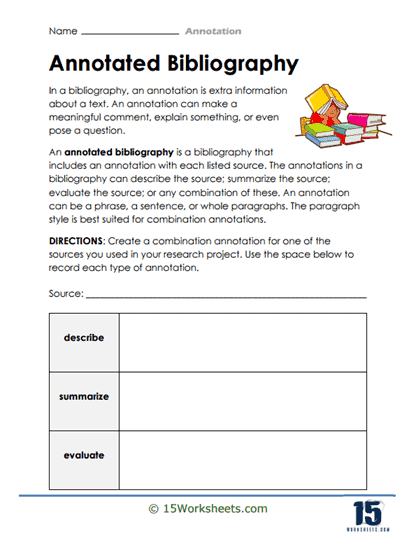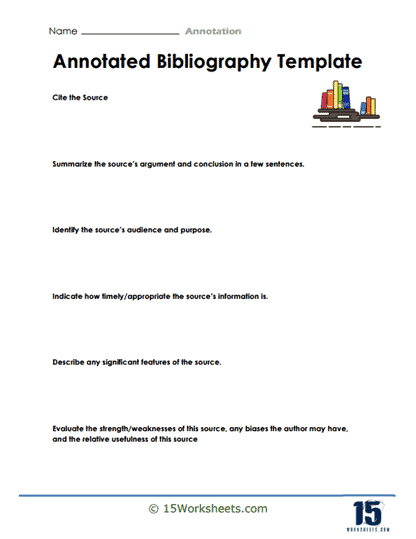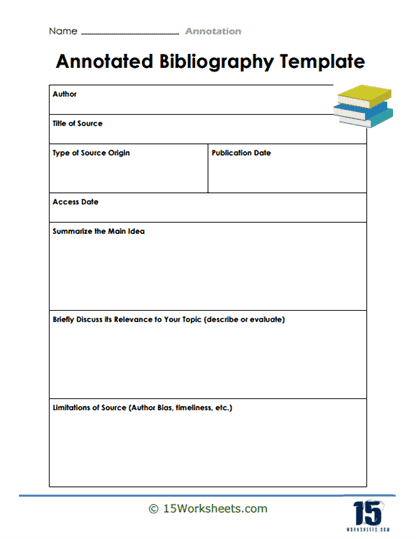Annotation Worksheets
All About These 15 Worksheets
These worksheets for students about annotation are designed to help students engage more deeply with texts by actively analyzing and interpreting them. They include a variety of activities that encourage critical thinking and annotation techniques.
Some of the activities that are included in these worksheets involve:
- Identifying key information – Students may be asked to identify key information in a text, such as main ideas, supporting details, and themes.
- Making notes – Students are encouraged to make notes in the margins of the text, highlighting important information or writing questions and comments.
- Creating symbols or anntotations – Students are tasked to make their own symbols to use to annotate texts so they can truly comprehend and connect with what they read.
Overall, these worksheets can help students to develop the important skill of active reading and critical thinking. By engaging with texts in a meaningful way through annotation, students can deepen their understanding of the content and develop their ability to analyze and interpret texts effectively.
Tips to effective annotation
Annotation is a powerful technique that can help students engage more deeply with texts and improve their critical thinking and analytical skills. Here are some tips for students on how to effectively annotate texts.
- Read actively: When reading a text, try to read actively rather than passively. This means actively engaging with the content, asking questions, and thinking critically about what you’re reading.
- Mark up the text: Use a highlighter or pen to mark up the text, highlighting key information or writing notes in the margins. This will help you to remember important information and to make connections between different parts of the text.
- Identify key information: Look for key information in the text, such as main ideas, supporting details, and themes. This will help you to understand the overall meaning of the text.
- Summarize: Try to summarize the main ideas of each section or passage of the text in your own words. This will help you to process the information and to ensure that you’ve fully understood the content.
- Analyze literary devices: Look for literary devices such as metaphors, similes, and allusions, and think about how they contribute to the meaning of the text.
- Write questions and comments: Write questions and comments in the margins of the text, and use these as a starting point for further discussion or analysis.
Effective annotation requires active engagement with the text, careful analysis, and critical thinking. By using these tips, students can improve their ability to engage with texts and develop their analytical skills.
What’s an annotated bibliography?
An annotated bibliography is a list of sources (such as books, articles, and other documents) that includes a brief summary and evaluation of each source. The purpose of an annotated bibliography is to provide an overview of the literature on a particular topic and to evaluate the quality and relevance of each source.
Annotated bibliographies can be used for a variety of purposes, such as to provide an overview of the literature on a particular topic, to evaluate the quality of sources for a research project, or to provide a reference list for a paper or presentation. They are often used in academic research to help researchers find and evaluate relevant sources on a particular topic.

